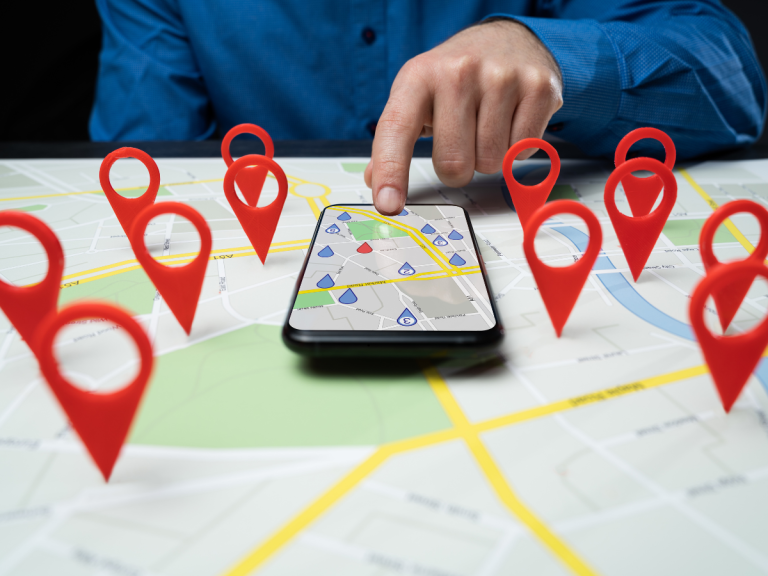In the digital age, local SEO has become crucial for businesses aiming to attract nearby customers. Whether you run a cozy café, a bustling retail store, or a professional service firm, optimizing for local search can significantly impact your bottom line. This comprehensive guide will delve into the essential strategies for mastering local SEO.
Understanding Local SEO
Local SEO (Search Engine Optimization) is the practice of enhancing your online presence to attract more business from relevant local searches on Google and other search engines. It’s particularly vital for brick-and-mortar businesses that serve specific geographical areas.
Key Strategies to Improve Local SEO
1. Optimize Your Google My Business Listing
Google My Business (GMB) is a free tool that allows businesses to manage their online presence across Google, including Search and Maps. An optimized GMB listing can significantly boost your local search visibility.
– Claim and Verify Your Listing: Ensure you claim and verify your GMB listing. This process adds credibility and control over your business information.
– Complete Every Section: Fill out all sections of your GMB profile, including business name, address, phone number (NAP), website, hours of operation, and business category. Ensure this information is accurate and consistent.
– Add High-Quality Photos: Upload high-resolution images of your business, products, and services. Photos can attract more clicks and improve user engagement.
– Encourage and Respond to Reviews: Positive reviews enhance your online reputation. Encourage satisfied customers to leave reviews and respond promptly to both positive and negative feedback.
2. Use Local Keywords
Incorporating local keywords into your website content helps search engines understand your business’s geographical focus.
– Keyword Research: Use tools like Google Keyword Planner, SEMrush, or Ahrefs to find local keywords relevant to your business. For example, if you run a bakery in Seattle, keywords like “Seattle bakery,” “best cupcakes in Seattle,” or “Seattle wedding cakes” could be valuable.
– On-Page Optimization: Include local keywords naturally in your titles, meta descriptions, headers, and content. Ensure the content is still engaging and informative for users.
3. Build Local Citations
Local citations are online mentions of your business’s NAP information. They play a crucial role in local search rankings.
– Consistent NAP: Ensure your business name, address, and phone number are consistent across all online platforms, including your website, social media, and local directories.
– List on High-Authority Directories: Submit your business to reputable local and industry-specific directories such as Yelp, Yellow Pages, and TripAdvisor. Each listing should have accurate and up-to-date information.
– Monitor and Update: Regularly check your citations for accuracy. Inconsistent information can confuse search engines and potential customers.
4. Create Local Content
Producing content that resonates with your local audience can drive more traffic and improve your local SEO.
– Local News and Events: Write blog posts about local news, events, or activities. For example, if there’s a local festival, create content around it and how your business is participating.
– Community Involvement: Share stories about your involvement in local community events or sponsorships. This humanizes your brand and builds local rapport.
– Local Guides and Resources: Develop guides or resources tailored to your area, such as “Top 10 Things to Do in [Your City]” or “A Local’s Guide to [City] Dining.”
5. Mobile Optimization
A significant portion of local searches is conducted on mobile devices. Ensuring your website is mobile-friendly is critical.
– Responsive Design: Use a responsive web design that adapts to different screen sizes and devices. This ensures a seamless user experience.
– Fast Loading Speed: Optimize your site’s loading speed by compressing images, leveraging browser caching, and minimizing JavaScript. Mobile users are less likely to wait for a slow-loading site.
– Click-to-Call Buttons: Implement click-to-call buttons on your site, making it easy for mobile users to contact you directly from their devices.
6. Leverage Social Media
Social media platforms can enhance your local SEO efforts by increasing your online visibility and engagement.
– Local Engagement: Engage with your local audience by sharing relevant content, responding to comments, and participating in local discussions.
– Geo-Tagged Posts: Use geo-tags in your social media posts to indicate your location. This can increase your visibility in local searches on platforms like Instagram and Facebook.
– Promotions and Events: Promote local events, discounts, or special offers through your social media channels. This can drive local traffic and increase your online presence.
7. Use Local Schema Markup
Schema markup is a type of code that helps search engines understand your website content better.
– Add Local Business Schema: Implement local business schema markup on your website. This includes details like your business name, address, phone number, hours of operation, and services offered.
– Rich Snippets: Schema markup can help your business appear in rich snippets, providing users with quick information and potentially increasing click-through rates.
Local SEO is a powerful tool for businesses looking to attract nearby customers and enhance their online presence. By optimizing your Google My Business listing, using local keywords, building local citations, creating relevant content, ensuring mobile optimization, leveraging social media, and using local schema markup, you can improve your local search rankings and drive more traffic to your business. Implement these strategies consistently to see sustained growth and success in your local market.



